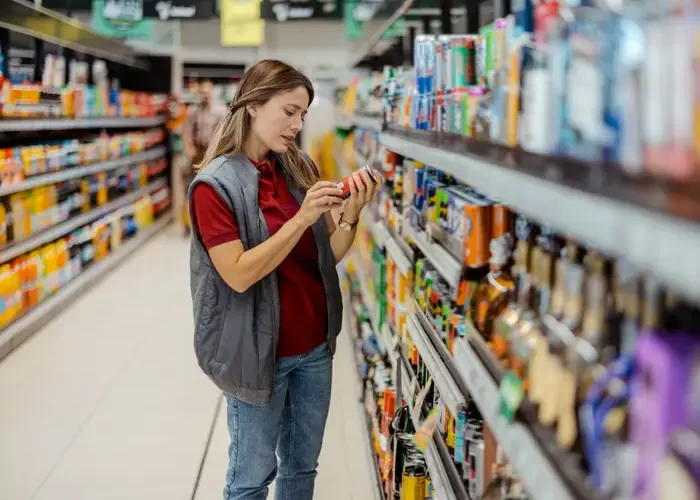The grocery store, a staple of American life, has historically been a place where consumers felt relatively secure in their spending. However, recent trends indicate that US shoppers are increasingly tightening their belts in this most unlikely place. This shift in consumer behavior is a reflection of broader economic pressures, changing shopping habits, and evolving societal trends. This article will delve into the reasons behind this phenomenon, the impact on the grocery industry, and the strategies that both consumers and retailers are adopting in response.
Economic Pressures and Rising Costs

Inflation and Price Increases
Inflation has been a significant driver behind the tightening of belts at the grocery store. Over the past few years, the US has seen notable increases in the cost of living, with food prices being a major contributor. According to the Bureau of Labor Statistics, food prices rose by 6.5% in 2022 alone. This rise in prices has made it challenging for many families to maintain their usual grocery budgets.
Stagnant Wages
While prices have been rising, wages for many Americans have not kept pace. Real wage growth has been sluggish, which has eroded purchasing power. As a result, consumers are forced to make tougher choices about where and how they spend their money, including at the grocery store.
Changing Shopping Habits
Increased Use of Discount Retailers
One noticeable trend is the increased use of discount retailers. Stores like Aldi, Lidl, and Dollar General have seen a surge in popularity as shoppers seek to stretch their dollars further. These retailers offer lower prices by focusing on private-label products and maintaining lower overhead costs.
Shift Towards Bulk Buying
Another trend is the shift towards bulk buying. Consumers are increasingly purchasing larger quantities of goods to take advantage of lower per-unit costs. Warehouse clubs like Costco and Sam’s Club have benefited from this trend, seeing increased memberships and higher sales volumes.
Evolving Societal Trends
Health and Wellness Concerns
Health and wellness concerns have also influenced grocery shopping habits. Many consumers are prioritizing healthier options, which can often be more expensive. Organic produce, free-range meats, and specialty health foods have seen increased demand, even as shoppers try to manage their budgets.
Sustainability and Ethical Consumption
Sustainability and ethical consumption are becoming more important to shoppers. Consumers are more willing to pay a premium for products that are environmentally friendly or ethically sourced. This shift has led to a greater emphasis on sustainable packaging, fair trade products, and locally sourced items, all of which can come with higher price tags.
Impact on the Grocery Industry
Increased Competition
The grocery industry is facing increased competition not only from traditional grocery stores but also from discount retailers, warehouse clubs, and online grocery services. This competition has forced many grocery stores to innovate and find new ways to attract and retain customers.
Adaptation and Innovation
In response to these challenges, grocery stores are adopting various strategies. Many are expanding their private-label offerings to provide lower-cost alternatives to name-brand products. Others are investing in technology to improve the shopping experience, such as self-checkout systems, online ordering, and home delivery services.
Strategies Adopted by Consumers
Budgeting and Planning
Consumers are becoming more strategic about their grocery shopping. Budgeting and meal planning have become essential tools for managing grocery expenses. Shoppers are more likely to use coupons, look for sales, and compare prices across different stores.
Reducing Waste
Reducing food waste is another strategy that consumers are adopting. By planning meals more carefully and using leftovers, shoppers can make their groceries last longer and reduce the need for frequent shopping trips.
Comparative Analysis of Shopping Behaviors
Traditional Grocery Stores vs. Discount Retailers
| Aspect | Traditional Grocery Stores | Discount Retailers |
|---|---|---|
| Pricing | Higher | Lower |
| Product Variety | Extensive | Limited |
| Store Experience | Full-service | Self-service |
| Brand Focus | National brands | Private labels |
| Customer Demographics | Broad | Budget-conscious |
Comparative Analysis of Consumer Strategies
Current Strategies vs. Past Strategies
| Aspect | Current Strategies | Past Strategies |
|---|---|---|
| Budgeting | Detailed meal planning and budgeting | Less emphasis on budgeting |
| Shopping Frequency | Fewer, larger shopping trips | More frequent, smaller shopping trips |
| Store Choice | Preference for discount and bulk stores | Preference for convenience and full-service |
| Product Selection | Focus on cost-effective and essential items | More brand loyalty and convenience foods |
| Health and Sustainability | Higher emphasis on health and sustainability | Lower emphasis on health and sustainability |
Analysis Table of Consumer Behavior Trends
| Trend | Description | Impact on Industry |
|---|---|---|
| Increased Use of Discounts | More shoppers are turning to discount retailers to save money. | Growth in discount retailer market share. |
| Shift Towards Bulk Buying | Consumers buy in bulk to save on per-unit costs. | Increased sales for warehouse clubs. |
| Health and Wellness Focus | Consumers prioritize healthy food options, even at higher costs. | Increased demand for organic and health foods. |
| Sustainability and Ethics | Growing preference for sustainable and ethically sourced products. | Expansion of sustainable product lines. |
| Technological Integration | Use of technology to enhance shopping experience (e.g., online ordering, self-checkout). | Investment in tech by grocery stores. |
Conclusion
The phenomenon of US shoppers tightening their belts at the grocery store is multifaceted, driven by economic pressures, changing shopping habits, and evolving societal values. As consumers navigate rising costs and stagnant wages, they are increasingly turning to discount retailers, buying in bulk, and prioritizing health and sustainability in their food choices. The grocery industry, in turn, is adapting by expanding private-label offerings, embracing technology, and enhancing their focus on customer needs. Understanding these trends and their implications can help both consumers and retailers better navigate the changing landscape of grocery shopping in the United States.












